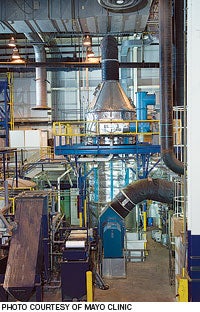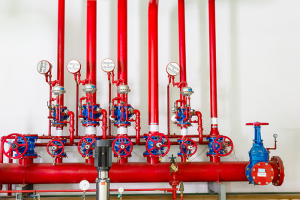Mayo finds technical fix to reduce incinerator emissions
 |
| The WESP installed on Mayo Clinic's incinerator. |
While the medical waste incinerator at Mayo Clinic in Rochester, Minn., consistently met state and federal emission requirements, facility leaders wanted to find a way to go beyond these standards.
Mayo Clinic's medical waste incinerator serves Mayo Clinic, Saint Marys Hospital and Rochester Methodist Hospital, which form the largest group medical practice in the world, and processes 2,000 pounds of waste an hour, 24 hours a day, five days per week. It is responsible for the safe, environmentally compliant thermal destruction of all medical waste generated by the 14 million-square-foot research, hospital, clinical and educational campus.
"Mayo Clinic's commitment to environmental responsibility, combined with its goal of meeting or exceeding regulatory standards, and positioning Mayo to meet potential, increasingly stringent future requirements led us to explore ways to voluntarily reduce particulate emissions," says Mayo Clinic's Karl Corrigan, section head, Division of Outpatient Project Services, Department of Facilities & Support Services.
As Mayo evaluated technologies that could be added to installed pollution control equipment, it determined that a bag house or a fabric filter removal system would not be effective because the bag or fabric would bind up due to the water vapor. Ultimately, they decided that Mahwah, N.J.-based Bionomic Industries Inc.'s (www.bionomicind.com) HEI™ Wet Electrostatic Precipitator (WESP) System was an optimal solution to remove particulates.
In recent years, health care facilities like Winter Haven Hospital, Winter Haven, Fla., and Sacred Heart Hospital, Pensacola, Fla.; and medical waste incineration engineering firms like TECO/BGA, Tampa, Fla., Kenyon and Partners, Plant City, Fla., and McLeod Environmental Inc., Little Rock, Ark., have found that WESP is a technologically sound, cost-effective solution for compliance with emission regulations.
"From our standpoint, we had a warranty level that needed to be met," Corrigan says. "The stack testing that has been done shows the unit easily meets its warranty level, which was significantly below the required emission limit level."




